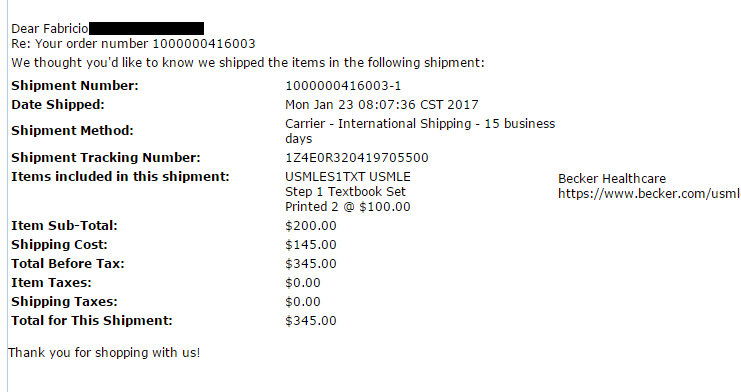- 1984 News Articles Updatemr. Becker's Classroom Management
- 1984 News Articles Updatemr. Becker's Classroom Assessment
- 1984 News Articles Updatemr. Becker's Classroom Behavior
- 1984 News Articles Updatemr. Becker's Classroom
“Coase, get your cattle off my land.” –Walter Block In one sentence, Walter Block called into question Ron Coase’s central conclusion in his now-famous theorem, namely, that the original distribution of ownership would not affect the allocation of scarce resources in a free market, if there were no. A Kirkwood chemistry teacher known for his ability to inspire both students and fellow educators has been selected as Missouri's Teacher of the Year for 2010-11, state education officials announced.
Abstract
This article reports selected results of a study in which teachers’ perceptions, opinions, and attitudes about instructional computing were examined. Implications about equitable access to computers in public schools are described. The data were gathered via a questionnaire mailed to 510 sixth-grade teachers in K-6 structured public schools. Significant findings concerning the nature of teachers’ thoughts and experiences with instructional computing, and the potential effect of those factors on students’ access to computers, are reported. As a needs assessment, this study provides useful information to instructional designers about how teachers perceive the computer and its use in their classrooms. Based upon the study, factors to consider when designing computer-based instruction for implementation in schools are suggested.
1984 News Articles Updatemr. Becker's Classroom Management
This is a preview of subscription content, access via your institution.
References

Alvarado, A. J. (1984, April). Computer education for all students.The Computing Teacher, 11(8), 14–15.
Anderson, R. E., Welch, W. W., & Harris, L. J. (1984, April). Inequities in opportunities for computer literacy.The Computing Teacher, 11(8), 10–12.
Becker, H. J. (1982, January).Microcomputers in the classroom—dreams and realities. Baltimore, Maryland: Center for Social Organization of Schools, John Hopkins University.
Becker, H. J. (1984, Spring). School uses of microcomputers. Report #3 from a national survey.The Journal of Computers in Mathematics and Science Teaching, III(3), 26–32.
Becker, H. J. (1985, July).The second national U.S. school uses of microcomputers survey. Paper presented at the World Conference on Computers in Education, Norfolk, Virginia.
Becker, H. J. (1986a, June).Instructional uses of school computers. Reports from the 1985 national survey. Issue number 1. Center for Social Organization of Schools, The Johns Hopkins University.
Becker, H. J. (1986b, August).Instructional uses of school computers. Reports from the 1985 national survey. Issue Number 2. Center for Social Organization of Schools, The Johns Hopkins University.
Berman, P., & McLaughlin, M. (1976). Implementation of educational innovation.Educational Forum, 40(3), 345–370.
Cuban, L. (1986).Teachers and machines: The classroom use of technology since 1920. New York: Teacher’s College Press.
Dalton, D., & Hannafin, M. (1986). The effects of video-only, CAI only, and interactive video instructional systems on learner performance and attitude: An exploratory study.Proceedings of the Annual Convention for the Association of Educational Communications and Technology in Las Vegas, Nevada.
Edwards, C. (1984, April). Achieving equity.The Computing Teacher, 11(8), 62–64.
Enochs, L. G. (1984, Spring). The effect of computer instruction on general attitudes toward computers of fifth graders.The Journal of Computers in Mathematics and Science Teaching, III(3), 24–25.
Fullan, M. (1982).The meaning of educational change. New York: Teachers College Press.
Keller, J. M. (1987). Development and use of the ARCS model of motivational design.Journal of Instructional Development, 10(3).
Lacina, L. J. (1984, Winter). Computer equity in public education.Education, 104(2), 128–130.
Marrapodi, M. R. (1984, April). Females and computers? Absolutely!The Computing Teacher, 11(8), 57–58.
Sarason, S. B. (1982).The culture of the school and the problem of change. Boston: Allyn and Bacon.
Schiffman, S. S. (1987). Influencing public education: A “window of opportunity” through school library media centers.Journal of Instructional Development, 10(4).
Schubert, J. G., & Bakke, T. W. (1984, April). Practical solutions to overcoming inequity in computer use.The Computing Teacher, 11(8), 28–30.
Sheingold, K., Kane, J., Endreweit, M., & Billings, K. (1981, February).Issues related to the implementation of computer technology in schools: A cross-sectional study. New York: Bank Street College of Education.
Shrock, S. A., & Byrd, D. M. (1987). An instructional development look at staff development in the public schools.Journal of Instructional Development, 10(4).
Weinshank, A. B., Trumbull, E. S., & Daly, P. L. (1983). The role of the teacher in school change. In L. S. Shulman & G. Sykes (Eds.),Handbook of teaching and policy. New York: Longman.
Author information

Affiliations

Corresponding author
Correspondence to Nancy Nelson Knupfer.
Rights and permissions
About this article

Cite this article

1984 News Articles Updatemr. Becker's Classroom Assessment
Knupfer, N.N. Teachers’ beliefs about instructional computing: Implications for instructional designers. Journal of Instructional Development11, 29–38 (1988). https://doi.org/10.1007/BF02905302
Issue Date:
DOI: https://doi.org/10.1007/BF02905302
Keywords
1984 News Articles Updatemr. Becker's Classroom Behavior
- Preservice Teacher
- Instructional Designer
- Teacher Training
- Inservice Training
- Instructional Development
1984 News Articles Updatemr. Becker's Classroom
Barbour, A. ‘Computing in America's Classrooms’.Electronic Learning. (October, 1984) pp. 39–44.
Becker, H.J.School Uses of Microcomputers. Issue No. 2. Baltimore, MD: The Johns Hopkins University, Center for Social Organization of Schools, 1983.
Becker, H.J.Instructional Uses of School Computers. Issue No. 1. Baltimore, MD: The Johns Hopkins University. Center for Social Organization of Schools, 1986.
Bell, R. ‘Wide-area Networking in Alberta Schools’. In G. Romaniuk (ed.)Proceedings of the Computers in Schools Strategic Planning Symposium. Edmonton, Alberta: Alberta Ministry of Education, 1986, pp. 197–206.
Bork, A. ‘Computer Futures for Education’.Creative Computing. (November, 1984) pp. 178–180.
Collis, B., and Muir, W. ‘A Survey of Computer Education Courses in Canadian Faculties of Education’.The Canadian Journal of Higher Education. 16 (1986), No. 1, pp. 61–72
‘Computers Used Too Narrowly in Schools’.The Times (U.K.), (27 June 1984) p. 3.
Goodlad, J.I.A Place Called School. New York: McGraw-Hill, 1983.
Heckman, P.E., Oakes, J., and Sirotnik, K.A. ‘Expanding the Concept of Renewal and Change’.Educational Leadership. 40 (1983), pp. 26–33.
Hoetker, J., and Ahlbrand, W.P. ‘The Persistence of the Recitation’.American Educational Research Journal. (1969), pp. 145–167.
Johnstone, B. ‘World-wide Explosion of School Micros’.The Times (U.K.) (24 July 1984), p. 17.
Kelley, J. ‘A Little Good News Today of Teaching in these High Tech Times’.CUE Journal. 5 (1985), No. 1, pp. 65–72.
Lehman, J.R. ‘Survey of Microcomputer Use in the Science Classroom’.School Science and Mathematics. 85 (1985), No. 7, pp. 578–583.
Lockheed, M.E., and Mandinach, E.B. ‘Trends in Educational Computing: Decreasing Interest and the Changing Focus of Instruction’.Educational Researcher. 17 (1986), No. 5, pp. 21–26.
Luehrmann, A. ‘Computer Literacy: A National Crisis and a Solution for It’.BYTE (June 1980) pp. 98–102.
‘Newsnotes’. (1985).Phi Delta Kappan, 67 (1985), No. 2, pp. 165–166.
Oakes, J., and Schneider, M.Computers in the Classroom: Another Case of the More Things Change the More They Stay the Same? Report No. 238. Los Angeles: University of California, Center for the Study of Evaluation, 1984.
Penny, D.A.The Ontario Educational Technology Program. Paper presented at the International Invitational Symposium on Government Policies in Educational Technology, Victoria, British Columbia, (May 1986).
Railsback, C.E. ‘Microcomputers: Solutions in Search of Problems?’Phi Delta Kappan. 65 (1983), No. 2, pp. 118–120.
Reinecke, I.Electronic Illusions: A Skeptic's View of Our High-tech Future. New York: Penguin Books, 1984.
Sandals, L.The Development of Computer-based Courseware: Issues and Concerns for Canadian Developers. Paper presented at the IBM-York University Computers in Education Seminar, Toronto, Ontario, June 1986.
Sarason, S.B.The Culture of the School and the Problem of Change. Boston: Allyn and Bacon, Inc., 1982.
Schubert, J.G.Females and Microcomputers Use in School: School Insights into Traditional Patterns. Paper presented at the Annual Meeting of the American Educational Research Association, New Orleans, April 1984.
Simair, D.Report on Computer Use in Canadian Public Schools. Unpublished report. British Columbia Ministry of Education, 1986.
Stevens, R.The Question as a Measure of Efficiency in Instruction: A Critical Study of Classroom Practice. (Contributions to Education, No. 48). New York: Columbia University, Teachers College, 1912.
Tinker, R. ‘What is Computer Literacy?’Hands On! Newsletter of the Technical Education Research Center. 7 (1984), No. 1, p. 2 and p. 4.
Tucker, M.S. ‘Computer in the Schools: What Revolution?’Journal of Communication. 35 (1985), No. 4, pp. 12–23.
Valdez, G. ‘Realizing the Potential of Educational Technology’.Educational Leadership. 43 (1986), No. 6, pp. 4–6.
